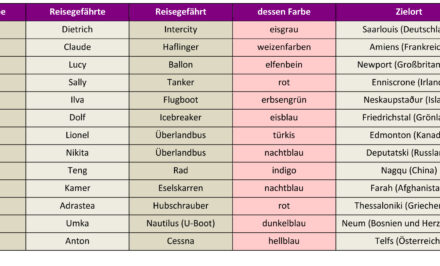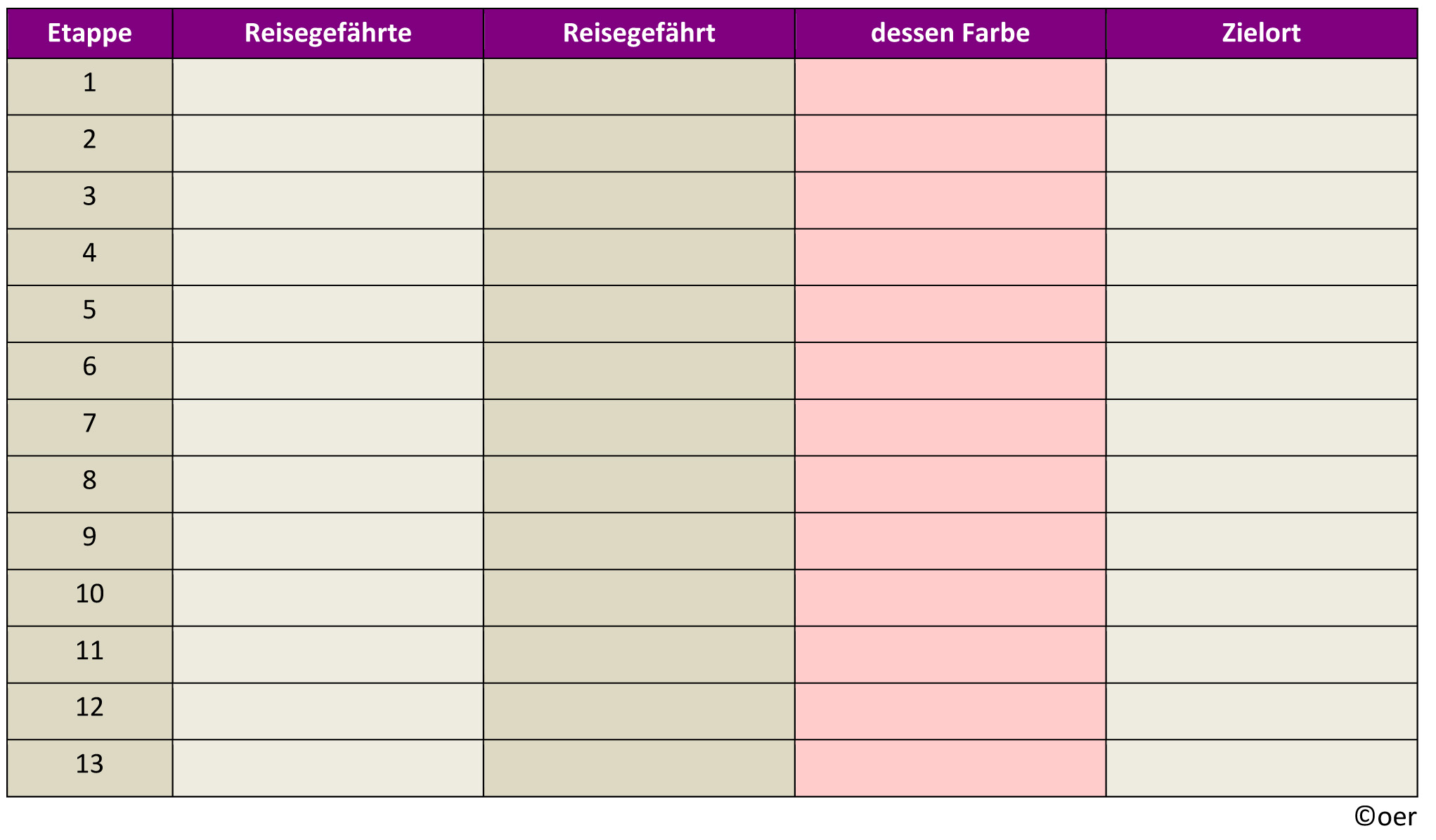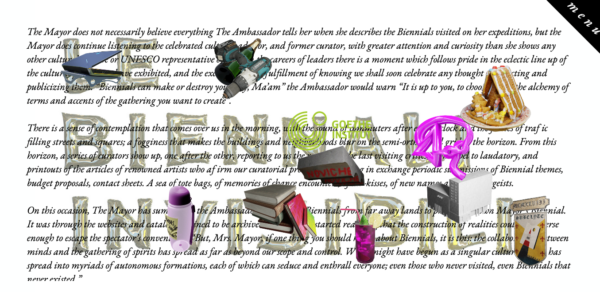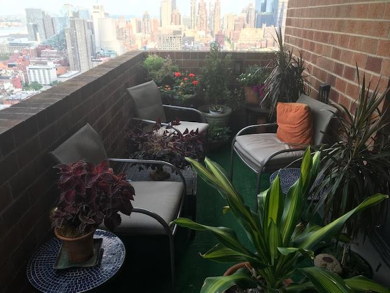
In the Beginning, a Terrace in Manhattan Running out of room for Mother Nature
Ah, the Country Life …
No End to Savage Amusement
Violent geese, vile squirrels, toads in love, etc.
Copyright © 2019 • Thomas Adcock
NORTH CHATHAM, New York—U.S.A.
Once upon a time, my wife and I were content as full-time denizens of hustle-bustle Manhattan—brash heart of a loud city populated by hundreds of skyscrapers and nearly nine million squabbling strivers; where anyone not beating you over the head with a club has friendship potential. We lived—and still do, Monday through Friday—on the forty-third floor of an apartment building with a commodious terrace overlooking the Hudson River.
It all started out there on the terrace, I suppose…
…First with a wee bit of greenery, just to perk up the brick and concrete; then another bit of green, then another; then a flower pot, and another and another. Until finally I covered the cement floor with rolls of artificial grass from a hardware store, which instead of raking to keep the terrace tidy I use a vacuum cleaner for what I grandly call the “city lawn.” Between our little crowd of sprouts and the occasional wayward pigeon, we had (still do) flora and fauna high above the gritty streets.
No matter how we tried replicating the natural world within a rectangle of unnatural boundaries, our crowded terrace fell short of The Great Outdoors. And dragging potted plants back inside before the snow flies strained the meager square footage of our one-bedroom apartment. Bottom line, we had plum run out of room for Mother Nature as co-tenant.
Thus began our dreamy notions of peace and quietude and wide-open spaces amidst the rolling hills, forested mountains, orchards, and farms of upstate New York. Not to mention the dear hearts and gentle people, who mostly refrain from clubbing their neighbors. Thus did we lifelong urban cliff dwellers succumb to a primal urge: ownership of our own sovereign patch of earth.
Onward to new rôles as lady and squire.
•
It’s now been twenty years since we acquired a weekend retreat one hundred and fifteen miles (185.8 km) upriver from Manhattan. It is here in the hamlet of North Chatham, population five hundred and three (including horses and cows), where we spend most Saturdays and Sundays; occasionally weeks at a time. Over these decades, we have heard the screeches of cowbirds and ferociously territorial geese, seen the comical mating rituals of tree frogs, smelt the acrid wafts of nocturnal skunks, fought off colonies of the devilish red squirrel, awakened from sleep when fireflies breach the window screens, stepped over the morning corpses of creatures lost to overnight combat, been horrified by mama turtles who abandon their young.
Ah, the country life. No end of savage amusement.
•
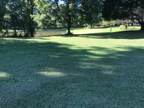

—Photos: Thomas Adcock 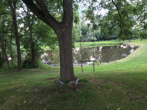
The Dacha
Clockwise from top left: Humble old house & humble red barn behind; tree house for the kuklas, with apple trees in distant background; the pond, with swing for the kuklas; a woodsy path, the grassy ex-pasture.
Upon our sovereign patch is a modest green clapboard house with a tin roof dating back to 1788, a mere two decades after musket-bearing colonists hereabouts bid a nervy “ta-ta” to King George of Britain and, at the time, the world’s mightiest military machine; a considerably more modest red barn where some two hundred chickens used to roost, home today for burrowing woodchucks and brown bats emergent at twilight to gobble up blood-sucking mosquitoes on the wing; and the remains of a small-scale sawmill enterprise at the side yard, today the site of a tree house for the grandkids—our two “kuklas.”
Out back of the tree house lies a former pasture, nowadays mown as neat and trim as a golf course and presided over by a dive-bombing owl (ibis) perched atop a mighty conifer, providing him a raptor’s view of tasty rodents scampering below. I have planted five fruiting trees in this pastoral scene (three apple, one pear, one cherry) and built a path of wood chips and pine needles through an adjacent thicket of silver maple trees and wild berry brambles, shelter for rabbits and wintering robins.
Along the far edge of the pasture is a lively pond, shared by mallards, blue and green herons, turtles, bullfrogs, Canada geese, bass, water spiders, and thirsty deer. I have twice seen eagles swoop low. Beyond, across an ancient fence, is an unseen neighbor’s cornfield, where in the dead of some nights is heard the feeding frenzy of coyotes after they’ve downed a fawn of the species cervidae.
Here in North Chatham, we have discovered that our notion of sovereignty is nonsense. The weekend digs—“the dacha,” we call it—may be our property, but it’s their territory. A “city hike” like me, as my Irish forebears would say, must learn to share his surroundings in an entirely new way. This means, for example, that one is well advised to steer clear of eerie sounds in the dark interior of a woodshed…
… Which brings us to a (partial) catalogue of my numerous tangles with Mother Nature, the world famous hellbat:

Man v. Marsupial
It was our very first Saturday morning at the dacha. I tried my (unqualified) hand at repairing an eccentric electrical system responsible for a strange buzzing, only to practically levitate whilst yanking a tangle of old-fashioned cloth-covered wires from a parlor wall. In the interest of safety, my wife threw me out of the house for the day. So I attempted another manful chore: the messy job of bringing order to a sloppy woodshed, situated in a shadowy rear quarter of the barn.
Scattered around, knee-deep, were musty piles of planks and logs and broken boards and rotted shutters and doors and crumbled concrete blocks. I began sorting wood for evaluation: What to toss, what to keep? But at the muffled sound of some creature in distress, I stopped. Yips and hisses directed me to the sight of something looking up at me from beneath a bloodstained board: something with piercing red eyes, razor teeth, and a nasty pink nose, curled and threatening—as if to say, “Prepare for attack, buster!” I would come to learn that I’d encountered a possum (didelphimorphia). But my immediate thought was one of survival: It was the marsupial or me.
Next came a flood of more thoughts that passed in nanoseconds: Having crawled into the woodshed for sanctuary to whatever awful assault had wounded him, and put him in a killing rage, the possum was about to lunge at me; he might well be diseased, and would surely sink infectious fangs into me; one false move and I could die from rabies poisoning; I had to somehow kill this suffering, maddened possum—yes, that would be the humane thing to do; I desperately needed to borrow some neighbor’s gun—no, no, that would be too late, and was insane besides…
…So I reached to the floor for a chunky concrete block, lifted it chest-high, and dropped it on the beast—twice, to make sure.
I dug a hole in the ground outside the barn, shoveled the dead beast down under, and spent the rest of the day in sweaty guilt.
The Rites of March: Avian & Amphibian

As the snows of winter begin melting here in the Northeast, flocks of Canada geese (branta canadensis)fly back from respites in sunnier climes. Among the returning flocks are two couples that seek out the pond, season after season. Mated for life and ultra-territorial, per their breed of big bird, we have named the four in homage to old-time radio comedies about married folk: Fred and Ethel, and the Bickersons; the former claim the north end of the pond, the latter the south. Within weeks of arrival, pandemonium strikes as a third couple dares to settle themselves in the middle of the pond.
This means war!
Fred and Mr. Bickerson grow chesty as they mount a pincer attack, flaying the interloping mid-pond enemy with stiffened wings and jabbing their backs with rock-hard beaks. Close behind their respective hubbies are Ethel and Mrs. Bickerson, the enraged ladies squawking encouragement while at dainty remove from the feather-flying combat.

Meanwhile, snugged in the grass at the base of black walnut trees along the south side of the house are assemblies of eastern tree frogs (hyla versicolor).They serve as evening amusements in late March and into April. Lovestruck boy frogs commence a sort of balletic competition, presumably with the goal of winning the heart of the prettiest girl frog. One by one, the boys leap straight up into the air with athletic grace, only to become seriously confused when gravity takes hold. Unaware of Sir Isaac Newton’s discovery—they are merely frogs, after all—the boys descend in a clumsy whirl of confusion. We are not the only ones richly amused. The girl frogs—I swear!—laugh at the boy frogs.
Where’s Mama?

At birthing time, so to speak, female turtles (testudines feminam)swim to the eastern shore of the pond, amble up the bank and use their hind legs to dig up little nesting holes in the spongy earth. After which, they squat tail-side over the nests and deposit a clutch of eggs—as many as a dozen. Mama covers the holes with soil and twigs, and saunters back to hubby in the pond. The youngsters hatch in about forty-five days with Mama nowhere to be seen. The baby turtles are thence on their own, guided only by reptilian instinct. Any wonder that I reference Mother Nature as a hellbat?
Killer Cowbirds

Yet more ovularactivity occurs in the upper limbs of a sugar maple that shades the back of our house. Robins construct sturdy nests there, trusting that height and thick leaf cover spell safety from predators. But with each season come the brown-headed cowbirds (molothrus ater), perhaps the hellbat’s most conniving creations, and certainly her laziest. Burglars of the fowl kingdom, cowbirds wait ‘til the robins aren’t home to surreptitiously establish nurseries for their own young—without themselves having to bother with construction, or the tedious business of sitting on their own lain eggs. With the rightful residents away, the cowbirds push a Tiffany blue robin’s egg or two out from the nests, then deposit their own—replacements that the legitimate mama bird keeps warm and healthy beneath her nether feathers along with her own.
Cowbirds reason that no one will be the wiser. One problem: The evicted egg(s) land on a driveway running along the side of the house, making those who espy them wise to the cowbird grift. Because it is so beautiful a color, I pick up the robin’s egg and keep under glass for a time.
Red Squirrel Horror

Some country vermin, we have learned, are tolerable. The occasional mouse (mus), for instance, is easy enough to trap and toss. And because they feed on termites and ants and moths, spiders (aranea)are our friends. I have no quarrel (yet) with the woodchuck (materiae materietur marmota)who lives under the barn; he’s kept at bay by a pair of plump feral cats (curets felibus)who patrol the property. Besides which, the woodchuck has become a companion of sorts when I mount my tractor to keep the pasture neat and tidy; in effect, I do the chewing for “Woody,” as I call my lethargic herbivore friend.
But I will absolutely not countenance the red squirrel, which is every bit as disgusting as the sound of its Latin species name—sciurus vulgaris.
Horrid people think red squirrels are cute—even cuddly protagonists in children’s storybooks, e.g. tales of “Nutkin” the rodent by Beatrix Potter (1866-1943), who was no doubt in league with the hellbat. Bah!
For a full year and partway into the second of our dacha decades, we skirmished with these wire-chewing, plaster-eating bastards forever scurrying up and down inside walls, to and fro in ceilings, usually skritch-skratching in the dead of night. Due to their collapsible bone structure, they’re able to enter a house through cracks as slim as a pencil. They delight in tearing through the house when human beings are away, ripping apart anything in paper or plastic bags and leaving behind their telltale spoor. They come and go through all seasons, making their nests in attics.
The buggers are wicked smart. According to the exterminator—a burly fellow who accomplished a fine and deadly job of eviction after several months’ effort, and worth every penny paid—the red squirrel species has developed a means of dealing with their competitor for walnuts, the larger grey squirrel (sciurus carolinesis). What happens is a ghastly method of population control: Male red squirrels organize commando units to attack individual male grey squirrels, biting off their testicles to thus render them incapable of impregnating female greys.
•
Let us also consider the two-legged population of upstate New York erectis hominum. By and large, they are more accommodating than their city cousins. There is a social fundament to this: In a city of nearly nine million, one can afford to offend; in a hamlet of five hundred and three, one needs to be everyone’s friend. I wonder what nasty things might be said behind closed country doors; in the city, nasty gets honestly thrown in your face.
In the cheerier context of human nature, there is endearing sameness of charity and goodness among friends and strangers in both Manhattan and North Chatham, to wit:
• The previous owner of our weekend house was an old man who, when not listening to a short-wave radio or heating up canned food for his lonesome meals, mostly sat by a window. One day, he spotted an old woman making a difficult way down the road in her wheelchair. Learning she was homeless, took her in and provided the poor woman with a first-floor room looking out to a magnificent tree of two hundred-plus years. Shortly before dying, she memorialized the tree with a pen-and-ink drawing; shortly before he died, the lonesome old fellow took the drawing out to his workshop in the barn and framed it.
• I have lost count of the number of times strangers in the city have returned belongings that I’ve misplaced—my wallet, my mobile phone, my keys, my eyeglasses. Following major surgery two years ago, friends came visiting at bedside and later during my recuperation at home; I am forever grateful. And especially during the darkest weeks of New York—the aftermath of terrorist attacks in September 2001—I am thankful to live in a city where people learned, by and large, to try a little tenderness.
Country folk are more trusting than us city hikes. That is a fact born out on the very first day of our twenty years of upstate life.
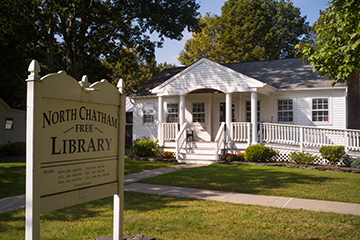
Mise-en-scène: the North Chatham Free Library. Dramatis personae: Library Lady, Me.
ME
Placing a book on the librarian’s desk—
I’d like to borrow this, please. I just moved here.
May I sign for a library card?
LIBRARY LADY
Smiling—
Oh? Where’d you land?
ME
I bought the dark green house, the one that
sits sideways on the road.
LIBRARY LADY
Oh, sure. Welcome to town. Hope you’ll be
happy here.
ME
Thank-you.
After a beat—
About that library card—?
LIBRARY LADY
Don’t worry about it. Go ahead, take the
book.
ME
When do I return it?
LIBRARY LADY
Scratching her head, through a hairnet—
I guess when you’re done reading it.
•
After twenty years, we are deeply rooted in North Chatham. As deeply rooted as we are in Manhattan. We’ll remain in both places for at least another twenty years, for we cannot fully appreciate one without the other.
- Thomas Adcock is America correspondent for CulturMag. He is the author of the Neil Hockady police novels with a new one in the works. His essays at CulturMag here.
contact: tadcockny(at)gmail.com
Additional photo credits
Possum—eastsideexterminators.com
Canada geese attack—flickr.com
Tree frog—nyfalls.com
Mama turtle—YouTube.com
Robin egg in glass—Thomas Adcock
Red squirrel—facebook.com
North Chatham Free Library —facebook.com




